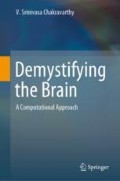Abstract
The story of what the human brain thought of itself over the millennia would be a very interesting read. From the days when men were not even certain about the status of the brain as the seat of mind and intelligence, to the present times of gene therapies and deep brain stimulation, brain science has come a long way. Like any other science history, history of the brain is a history of errors in our ideas about the brain. A study of historical questions in this science, followed by an account of some of the questions answered (or remain unanswered, like the vexing question of “consciousness”) in contemporary thinking, helps us arrive at a balanced and realistic perspective of contemporary knowledge in neuroscience.
My hand moves because certain forces—electric, magnetic, or whatever ‘nerve-force’ may prove to be—are impressed on it by my brain. This nerve-force, stored in the brain, would probably be traceable, if Science were complete, to chemical forces supplied to the brain by the blood, and ultimately derived from the food I eat and the air I breathe.
—Lewis Carroll (1832–1898), from Sylvie and Bruno, 1890.
Access this chapter
Tax calculation will be finalised at checkout
Purchases are for personal use only
Notes
- 1.
This form of learning, in which the involuntary response (salivation) of an animal to stimulus is studied, is known as classical conditioning. There is a very different class of conditioning known as instrumental conditioning, in which the animal produces a voluntary response.
References
Chisholm, H. (Ed.). (1911). Du Bois-Reymond, Emil. Encyclopædia Britannica (11th ed.). Cambridge: Cambridge University Press.
Ehrlich, P. (1913). Address in pathology on chemotherapeutics: Scientific principles, methods and results. Lancet, 2, 445–451.
Finger, S. (2000). Minds behind the brain: A history of the pioneers and their discoveries. Oxford: Oxford University Press.
Graham, G. (2010). Behaviorism. In E. N. Zalta (Ed.), The Stanford encyclopedia of philosophy (Fall 2010 Edition). URL: http://plato.stanford.edu/archives/fall2010/entries/behaviorism/.
Grmek, M. D. (1970–80). Claude Bernard. Dictionary of scientific biography (Vol. 2, pp. 24–34). New York: Charles Scribner’s Sons.
Gross, C. G. (1998). Brain, vision, memory. Tales in the history of neuroscience. Cambridge: MIT Press.
Kandel, E. R. (1991). Brain and behavior. In E. R. Kandel, J. H. Schwartz, & T. M. Jessel (Eds.), Principles of neural science (3rd ed., pp. 5–17). Appleton: Lange.
Lewis, J. (1981). Something hidden: A biography of Wilder Penfield. New York: Doubleday and Co.
Patton, L. Hermann von Helmholtz. Stanford encyclopedia of philosophy. http://plato.stanford.edu/entries/hermann-helmholtz/.
Pavlov, I. P. (1927). Conditioned reflexes: An investigation of the physiological activity of the cerebral cortex (G. V. Anrep, Trans.). London: Oxford University Press.
Ramon y Cajal, S. (1906). The structure and connexions of neurons. In Nobel Lectures: Physiology or Medicine, 1902-1921 (pp. 220–253), 1967. Amsterdam: Elsevier.
Shepherd, G. M. (1991). Foundations of the neuron doctrine. New York: Oxford University Press.
Van Leeuwenhoek, A. (1932). Antony Van Leeuwenhoek and his “Little Animals”. USA: Dover Publications Inc.
Wernicke, C. (1908). The symptom complex of aphasia. In A. Church (Ed.), Disease of the nervous system (pp. 265–324). New York: Appleton.
Young, R. M. (1970). Mind, brain and adaptation in 19th century. Oxford: Clarendon Press.
Author information
Authors and Affiliations
Corresponding author
Rights and permissions
Copyright information
© 2019 Springer Nature Singapore Pte Ltd.
About this chapter
Cite this chapter
Chakravarthy, V.S. (2019). Brain Ideas Through the Centuries. In: Demystifying the Brain. Springer, Singapore. https://doi.org/10.1007/978-981-13-3320-0_1
Download citation
DOI: https://doi.org/10.1007/978-981-13-3320-0_1
Published:
Publisher Name: Springer, Singapore
Print ISBN: 978-981-13-3319-4
Online ISBN: 978-981-13-3320-0
eBook Packages: Computer ScienceComputer Science (R0)

